
Fostering customer loyalty nowadays involves more than just offering great service. It implies that you must first give and then ask. It also requires ongoing dedication, resources, and knowing how to create a loyalty program.
Reports from businesses with loyalty programs show that top-performing programs achieved a 15% to 25% annual increase in revenue from customers who actively used the programs.
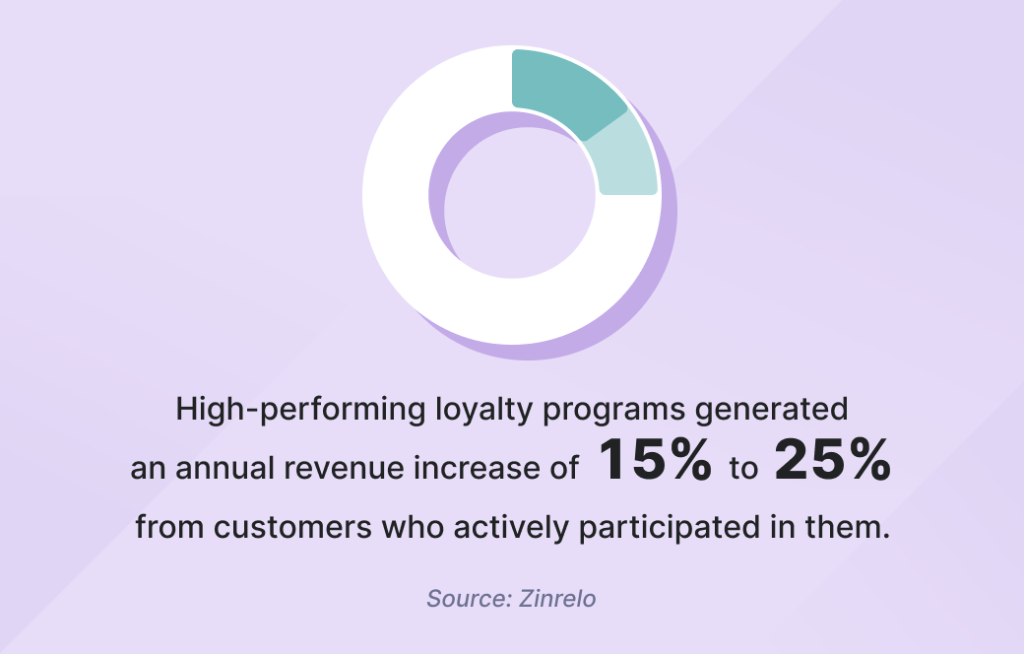
Our guide contains actionable tips on how to create a customer loyalty program that resonates and delivers tangible results. We’ve also included real-life examples of successful loyalty programs to inspire you.
TL;DR
- Your loyalty program should offer unique value to encourage customer participation.
- You should establish clear objectives to guide your program toward success.
- Carefully budgeting expenses and revenue sustains a profitable loyalty program.
- You should analyze your audience and existing loyal customers to tailor your program to their preferences.
- Develop a detailed implementation plan with a timeline to launch your loyalty program.
- It’s recommended to use innovative tools to streamline customer loyalty management.
- Social media and other marketing channels can help you promote your loyalty program.
- Collaborate with other businesses or partners to expand your program’s reach.
What is a loyalty program for customers?
Let’s start by understanding what the industry defines as a loyal customer. Customers displaying ongoing loyalty are those who:
- Make repeat purchases
- Engage with your brand across different channels
- Offer feedback on how your company can improve its services
- Act as advocates for your brand, recommending your products or services to others
Now that we have a clear picture of what a loyal customer is, let’s see how a loyalty program fosters these behaviors. A customer loyalty program, often referred to as a rewards program, is a marketing action that rewards customers for frequently interacting with a brand. It aims to motivate customers to continue buying or using a service.
Loyalty programs tap into psychological principles like reciprocity and status-seeking behavior. They create a sense of exclusivity and belonging among customers.
- Customers feel compelled to reciprocate after receiving benefits or rewards. They are more likely to make future purchases as a way to return the favor.
- These programs can make customers strive for higher tiers or exclusive perks. They often view those as an upgrade in their social status.
✈️ Example: Airlines offering elite status tiers with exclusive lounge access and priority boarding. This is a good tactic for appealing to customers’ desire for recognition.
The benefits of loyalty programs
Loyalty programs are a win-win for both businesses and customers.
The benefits of loyalty programs for businesses
- Increased customer retention: Loyalty programs aim to keep customers coming back. They can reduce customer churn and build a stable base of repeat customers.
- Higher spending: Loyalty programs often incentivize customers to spend more to reach certain reward thresholds. This can increase the average transaction size or frequency.
- Gathering customer data: Enrollment in loyalty programs often requires customers to provide personal information. This allows businesses to collect valuable data on purchasing behaviors, preferences, and demographics. They can use this data in targeted marketing, personalized offers, and to better understand customer needs.
- Enhanced customer engagement: Loyalty programs can increase customer engagement with the brand through personalized communication. Engaged customers are more likely to spread positive word-of-mouth and potentially attract new customers.
- Gaining a competitive edge: A well-designed loyalty program can serve as a competitive advantage. It can offer value that customers can’t get from competitors. This can be particularly effective in industries where products or services are similar or commoditized.
- Increase brand recognition: You can offer custom rewards, such as branded items (like customized phone cases) that your customers will use, helping spread your brand’s awareness. Partnering with print-on-demand vendors provides a convenient way to test this strategy and assess its long-term impact on brand recognition.
The benefits of loyalty programs for customers
- Savings and discounts: Customers can enjoy discounts on purchases, which helps them save money over time. Special sales and offers are often available exclusively to members of loyalty programs.
- Rewards for purchases: Loyalty programs often reward customers with points for each purchase. These can be redeemed for discounts, products, or services.
- Enhanced service and support: Loyalty program members often receive priority service. This includes dedicated support lines, faster response times, or personalized assistance.
- Convenience: Features like simplified returns, early check-ins, late check-outs for hotels, or the ability to reserve products can make the shopping or service experience more convenient for members.
- Birthday and anniversary bonuses: Many programs offer special bonuses or discounts on a customer’s birthday or the anniversary of joining the program. This adds a personal touch to the customer relationship.
How to create a loyalty program clients will love
Follow these steps to create a unique loyalty program and unlock its full potential:
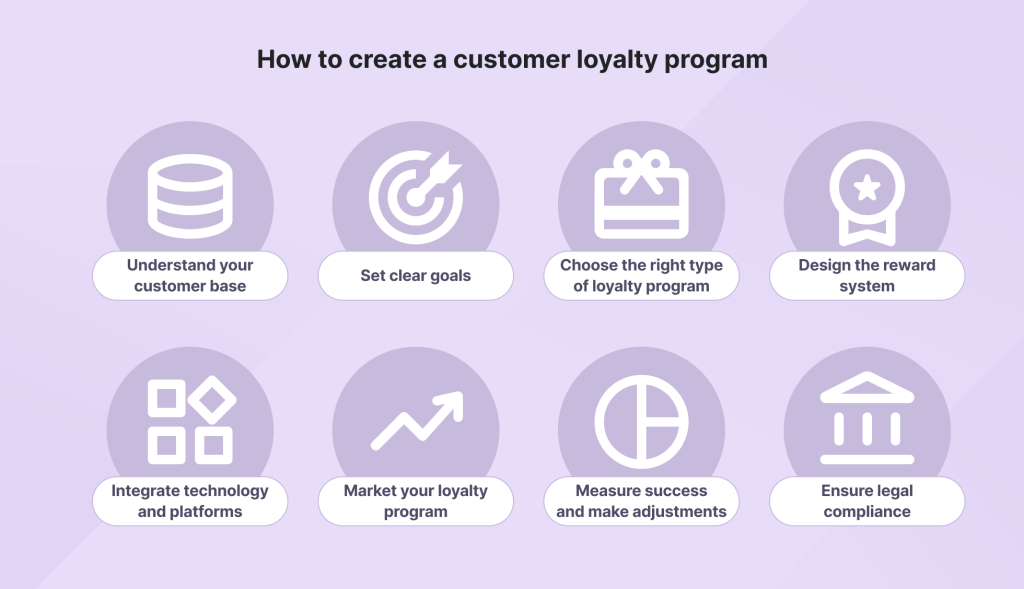
1. Understand your customer base
If you want to create a winning loyalty program, you must understand your customer base and build a program that speaks directly to their interests.
Gather data to learn what incentivizes your customers’ continued engagement. The following strategies will help you in that endeavor:
- Conduct surveys to gather direct insights from your customers
- Analyze purchasing history and transactional data to identify trends and preferences
- Use demographic information to segment your customers
- Monitor your social media channels for insights into customer interests
- Collaborate with sales and customer service teams to gather insights from interactions
- Use Google Analytics to track customer behavior and engagement
- Leverage customer relationship management (CRM) software to centralize customer success metrics
2. Set clear goals
Establishing clear goals provides direction and purpose to your loyalty system. These can include increasing repeat purchases or enhancing customer lifetime value.
Use the SMART framework to effectively define your goals:
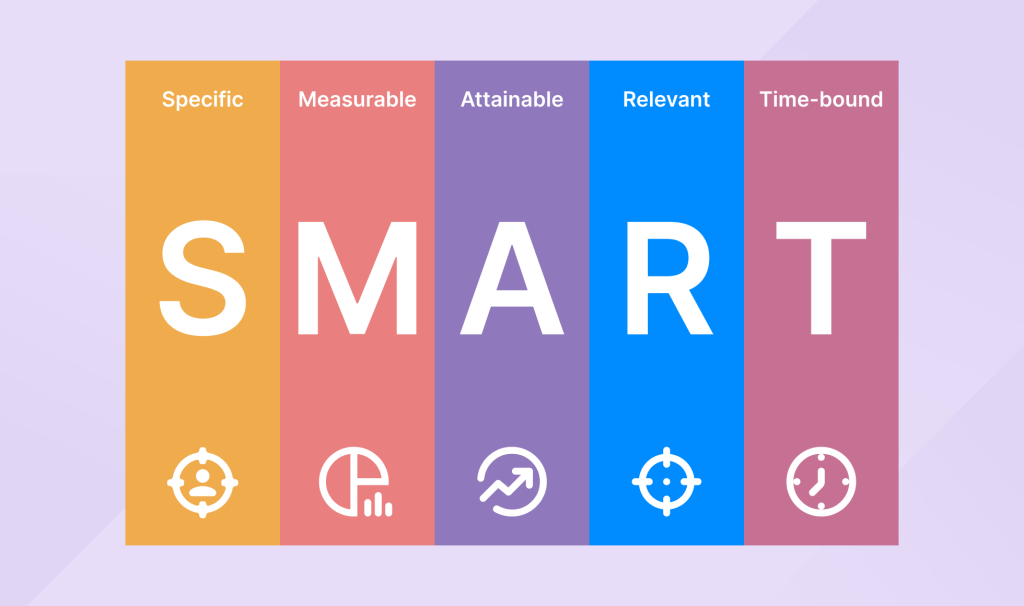
- Specific: Clearly define what you want to accomplish with the loyalty program. For example, you may want to increase customer retention or boost average order value.
- Measurable: Establish metrics to track the performance of the customer loyalty program. For instance, you may want to see an increase in customer satisfaction scores.
- Attainable: Ensure that your goals are realistic and attainable within the resources and capabilities of your business.
- Relevant: Align your goals with your business objectives and the needs of your target audience.
- Time-bound: Set deadlines or timeframes to achieve your goals. This gives you a sense of urgency and accountability to drive results.
3. Choose the right type of loyalty program
When deciding on a loyalty program, exploring the various types available is essential. Each offers unique benefits and incentives for customers to engage with your brand:
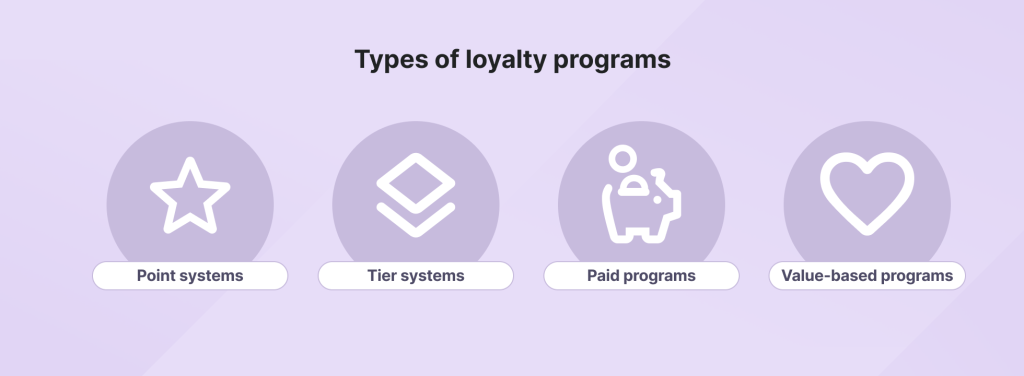
Point systems
This is one of the most common and straightforward loyalty programs. Customers earn points for each purchase, which they can later redeem for discounts, gifts, or other perks.
👍 Best use case: Businesses with frequent, short-term purchases, such as retail or e-commerce.
Max Tang, CMO at GEEKOM, described how his company leverages point systems:
“At GEEKOM, we created a point-based program that rewards not only purchases but also referrals, social engagement, and product feedback. We segmented our audience based on purchase history, identifying top customers and offering them personalized incentives.
Customers who earn 1,000 points, for example, can redeem free accessories like SSD upgrades for our mini PCs or gain early access to new product launches. This approach increased our repeat purchase rate by 30% in six months and our referral traffic by 25%. Beyond increasing revenue, the program improved our relationship with customers, who valued the tangible benefits they received.”
Tier systems
Tier systems categorize customers based on their loyalty or spending level. They offer increasingly valuable rewards as customers move up the tiers. This system is designed to create a sense of exclusivity and prestige.
👍 Best use case: Businesses offering premium services or products like airlines, hotels, or luxury brands. It also works in industries where the value of a customer’s purchase is high and there are clear differences in the service levels or products that can be given as rewards.
Paid programs
These are also known as subscription-based loyalty programs. Customers pay a fee to join and, in return, get access to exclusive benefits or experiences. This upfront investment creates a sense of commitment, urging customers to make repeat purchases.
👍 Best use case: Businesses that can offer valuable, exclusive benefits that justify the subscription cost, such as e-commerce platforms, premium retail brands, and services that can offer continuous value over time.
Value-based programs
These programs don’t reward customers only for their purchases. They also reward them for actions that align with the company’s values or contribute to social causes. These can include donations to charities, recycling initiatives, or other socially responsible behaviors.
👍 Best use case: Companies with a strong commitment to social responsibility or those targeting customers who value ethical and sustainable practices. It’s best for brands in the beauty, fashion, and food industries looking to build a community around shared values.
📝 Evaluate these options based on what resonates most with your customers and supports your business goals.
4. Design the reward system
When designing rewards, consider your customer base’s unique needs and preferences. Then, tailor the rewards to create a loyalty program that offers genuine value.
Examples of loyalty and rewards programs to consider:
- Exclusive offers
- Free products or samples
- Discounts on future purchases
- Loyalty points redeemable for gifts
💑 Consider non-monetary incentives that can create emotional connections with customers. These can include personalized recognition, like a thank-you note or a social media shout-out.
5. Integrate technology and platforms
Integrating technology and platforms is key to ensuring that you create a successful loyalty program. This involves selecting the appropriate software or platform to manage the program’s operations.
Consider factors such as:
- Ease of use
- Customization options
- Compatibility with your existing systems
☯️ Ensure that you can integrate your loyalty program within your existing sales and marketing tools. For instance, if you are a retail store, you may want to integrate your reward loyalty programs with your point of sale (POS) systems. This can help you automatically track customer purchases.
6. Market your loyalty program
Make sure that both current and future customers are aware of the perks of your loyalty program. This means reaching out to them through various channels. At the same time, you want to make sure that the message is clear and enticing.
With the right marketing strategies in place, you can create excitement and drive engagement. Try out these strategies to promote your loyalty incentives.
- Use email marketing: Send targeted emails highlighting the program’s benefits. Include exclusive offers or incentives to encourage sign-ups.
- Leverage social media: Utilize your social media channels to create awareness about the program. Share engaging content, testimonials, or sneak peeks of upcoming rewards.
- Maximize in-store signage: Promote the program through physical signage in your stores. Display banners, posters, or tabletop signs to catch customers’ attention while they’re shopping.
7. Measure success and make adjustments
Monitoring key performance indicators (KPIs) helps you understand how effective your loyalty program is.
- Participation rates indicate how many customers are actively engaging with your loyalty program.
- Redemption rates show how many customers are taking advantage of the rewards offered.
- Customer satisfaction reflects how well the program is meeting your customers’ expectations.
Let’s say you’ve implemented a customer loyalty card program. Your goal is to increase customer engagement and repeat purchases. You’ll then want to track the following metrics:
- The number of new sign-ups
- Redemption rates
- The average spend per visit
📈 Analyze these metrics regularly to identify any areas that may need improvement. Be open to adjustments based on feedback and performance data.
8. Ensure legal compliance
This involves taking actionable steps to maintain the legal conformity of your loyalty program.
Here are three key actions to consider.
- Review relevant laws: Familiarize yourself with privacy and marketing regulations applicable to loyalty reward programs.
- Update policies: Revise company policies to align with legal requirements.
- Train employees: Provide comprehensive training on legal obligations and data handling practices.
Building a loyalty program for a small business
There are special considerations to keep in mind if you want to create a loyalty program for a small business. First, it should be easy to manage. Second, it should provide meaningful rewards to customers without overstretching the budget.
Stanislav Khilobochenko, VP of customer services at Clario, shared the basic principles of running a small business loyalty program:
“A loyalty program for small businesses is successful when it encourages consistent engagement. Begin by identifying your top customers and determining what keeps them coming back.
For example, a small direct-to-consumer brand I consulted had a simple tiered program in which frequent buyers received early access to products after five purchases and exclusive content such as “behind-the-scenes” stories. This strategy resulted in a 40% increase in repeat orders within a year by making loyal clients feel like they were part of an inner circle.
To start small, use simple tools like Google Sheets or free versions of loyalty platforms. Keep it personal — emailing individual thank-you notes or birthday offers can often generate more trust than large-scale promotions. Test rewards that complement your brand’s identity, such as product sneak peeks or VIP community access. Success comes from building connection, not complexity.”
Here are 10 creative ideas that don’t break the bank:
- Social media contests or giveaways
- Surprise gifts or samples with purchases
- Exclusive offers or promotions for loyal customers
- Birthday rewards, such as a free product or discount
- Personalized thank-you notes and confirmation emails
- Partnering with local companies for joint loyalty programs
- Referral incentives for customers who bring in new business
- VIP membership tiers with increasing benefits based on spending
- Customer reward cards that accumulate points with each purchase for discounts
- Donation-based rewards, where a percentage of purchases goes to a local charity
Examples of small businesses with effective loyalty programs
Here are two examples of small businesses with loyalty programs that boost their bottom line.
Mirenesse
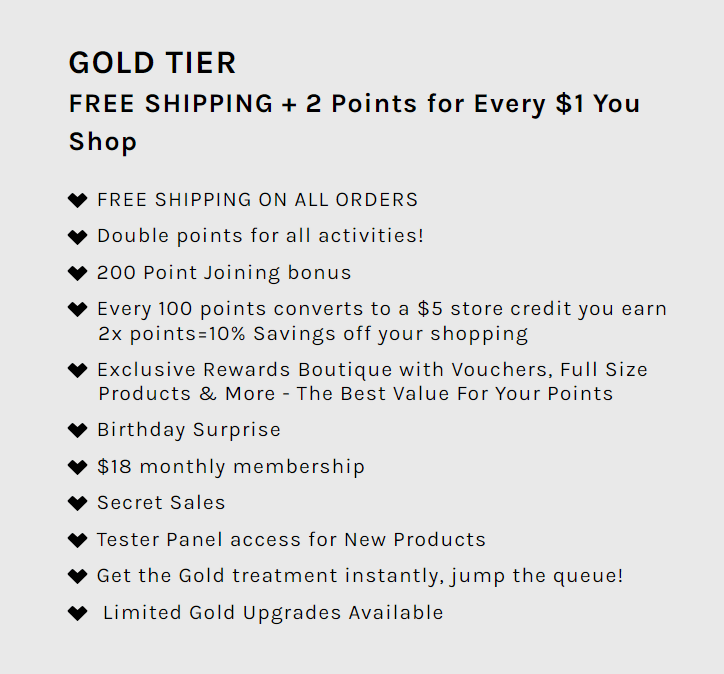
Image source: mirenesse.com
Mirenesse’s approach demonstrates how to create a loyalty program that can be creatively tailored to offer exclusive perks.
The beauty brand introduced the “Gold tier,” a premium membership tier. For a monthly fee of $10, customers can receive extra benefits beyond the standard rewards. This includes a reward point system and exclusive access to secret sales. Customers can also participate in product trials.
Lucy and Yak

Image source: lucyandyak.com
The success of loyalty programs depends on how appealing their rewards are. However, how you market your loyalty program can make a significant difference.
Lucy and Yak’s approach is characterized by their distinctive tone of voice. Instead of simply earning points, customers accumulate “Yak points.” Also, rather than generic tier names like “Tier 1” or “Tier 2,” they named their tiers “Comfort Lover,” “Yak Enthusiast,” and “Dungaree Devotee.” This adds a unique touch that reflects their brand personality.
Four outstanding loyalty program examples
Big companies have also implemented loyalty programs. Here are some case studies showcasing successful loyalty programs implemented across diverse industries.
🤩 We’ve written a dedicated piece on successful loyalty program examples across various industries, so make sure to check it out here for more inspiring case studies and ideas.
Costa
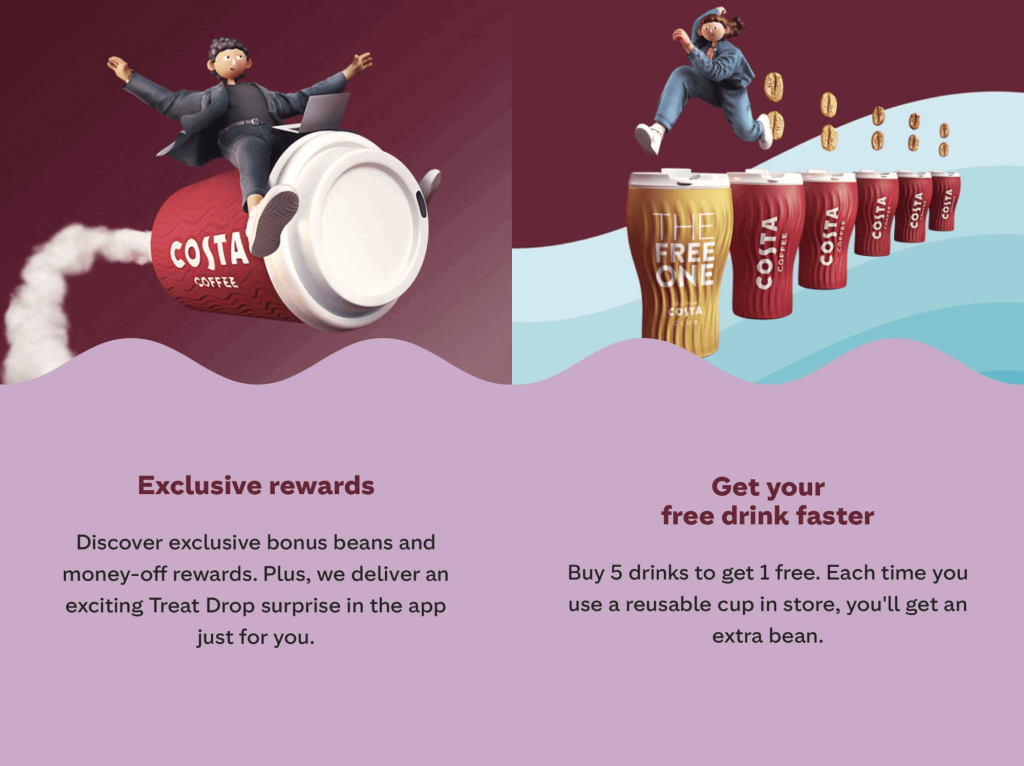
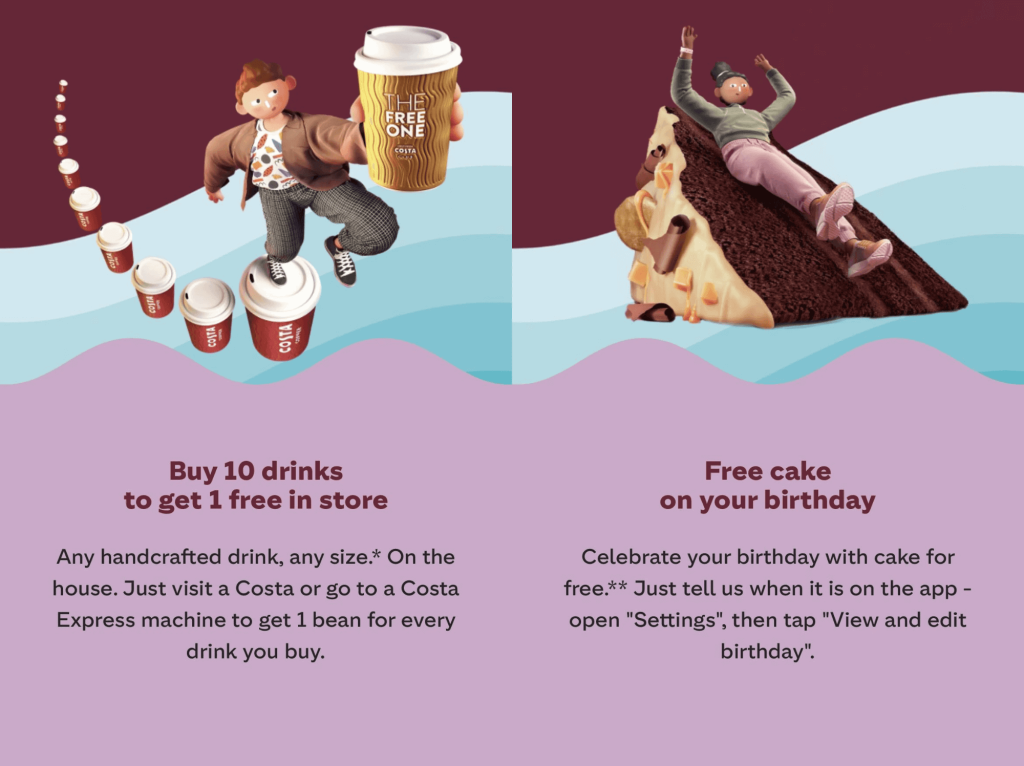
Images source: costa.co.uk
Costa is a coffee shop chain renowned for its high-quality beverages and warm ambiance. It has built a loyal customer base through its exceptional service and commitment to sustainability. Costa Club, its loyalty program, rewards frequent customers with perks and exclusive discounts.
What makes this loyalty program successful
- Costa Club operates on a simple “Buy 10 drinks, get 1 free” model. It gives customers a clear goal to work towards and an easily understandable reward system.
- Encouraging the utilization of reusable cups aligns with Costa’s environmental sustainability goals. It also rewards customers with an extra “bean” for each use, promoting eco-friendly behavior.
- The “Treat Drop surprise” feature adds an element of gamification to the loyalty program, helping to keep customers engaged and excited.
The Body Shop
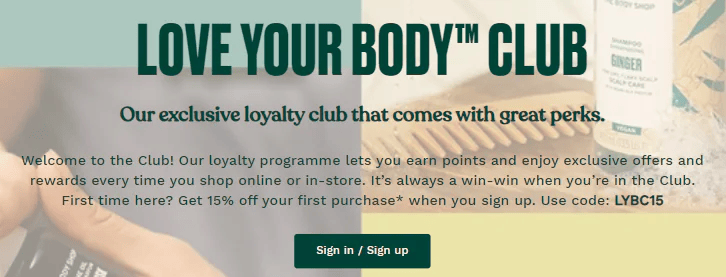
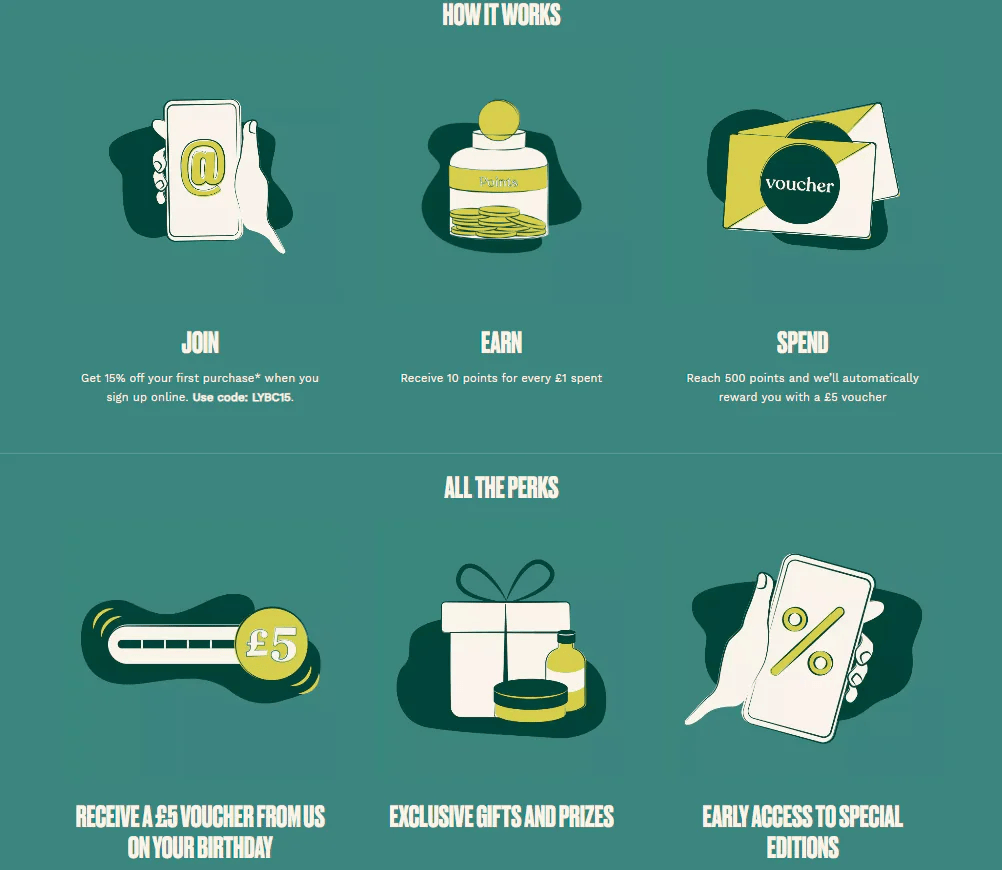
Images source: thebodyshop.com
The Body Shop is a global beauty brand. It is renowned for its ethical and sustainable approach to bath and body products.
Its “Love Your Body Club” is an exclusive loyalty program that rewards customers for their ongoing support and purchases. Club members earn points for every pound spent, which they can redeem for various rewards.
What makes this loyalty program successful
- The clear points-to-pound conversion rate (10 points for every £1 spent) ensures transparency. It also allows members to easily track their progress.
- The 15% discount on the first purchase upon sign-up encourages customers to join the loyalty program and act.
Lego

Image source: lego.com
Lego is a renowned brand that produces construction toys loved by children and adults alike. Its exclusive loyalty program is called Lego Insiders. It is designed to reward Lego enthusiasts for their purchases and brand engagement.
What makes this loyalty program successful
- Lego’s loyalty program offers points for purchases and registration of toy sets. This enhances engagement beyond transactions.
- Customers can redeem points for various rewards. These can include exclusive gear, discounts, or Legoland tickets. The membership program caters to different preferences.
Mailchimp
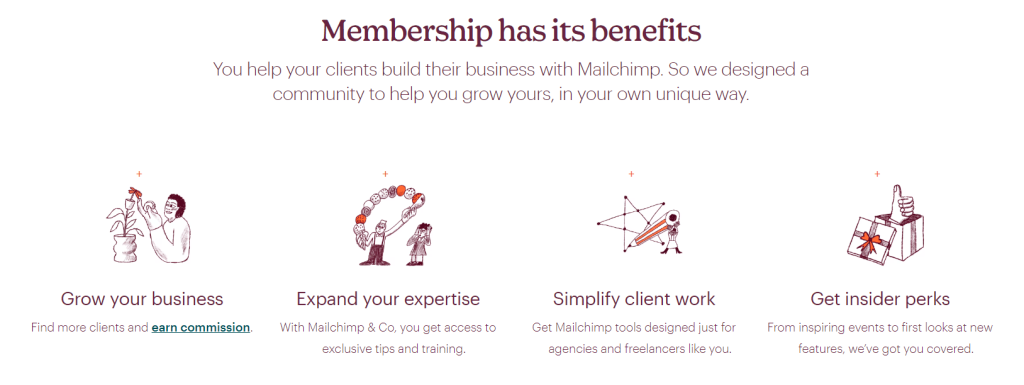
Image source: mailchimp.com
Mailchimp is a leading email marketing service provider. It has an intuitive loyalty program tailored for marketers and digital agencies.
What makes this loyalty program successful
- Loyal customers receive invitations to partner with Mailchimp, gaining access to specialized expertise and training. This personalized approach makes members feel valued and supported in their business endeavors.
- Members are given access to exclusive events as part of the loyalty reward program. This cultivates a sense of community and belonging.
Best customer loyalty software on the market
Several contenders are available for customer loyalty software. Let’s check out three of the top choices.
LoyaltyLion
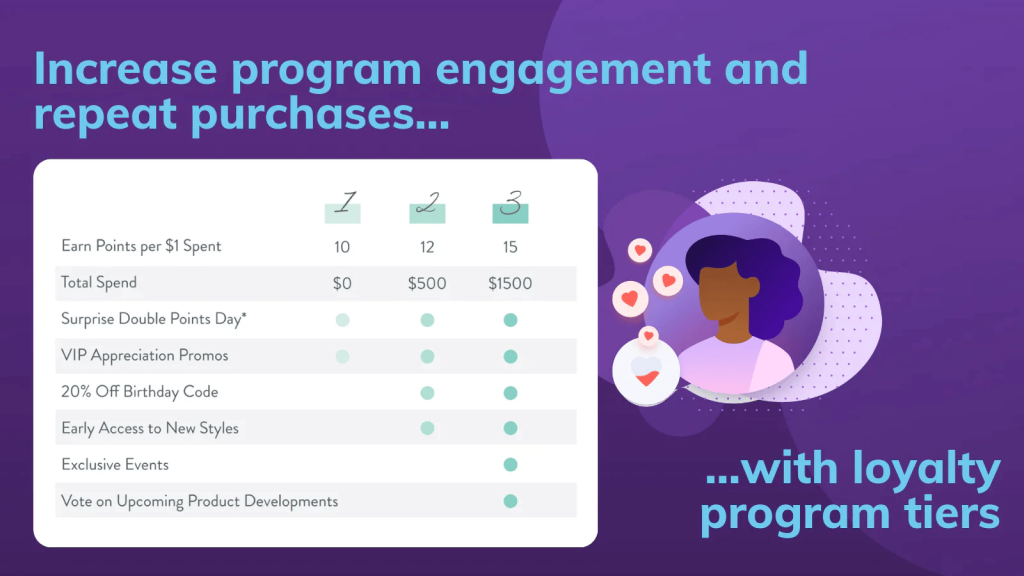
Image source: apps.shopify.com
LoyaltyLion is software designed to help businesses of all sizes build and maintain customer loyalty. Its intuitive platform offers a range of features to engage customers and drive repeat purchases.
Unique selling points
- Boasts omnichannel capabilities, allowing businesses to engage customers across multiple touchpoints.
- You can set up automated campaigns to trigger targeted communications and rewards based on customer action.
- It integrates with existing CRM systems, enabling you to consolidate customer loyalty schemes.
Pricing
- A free trial and a free plan are available
- Paid plans start at $199/month
Smile.io
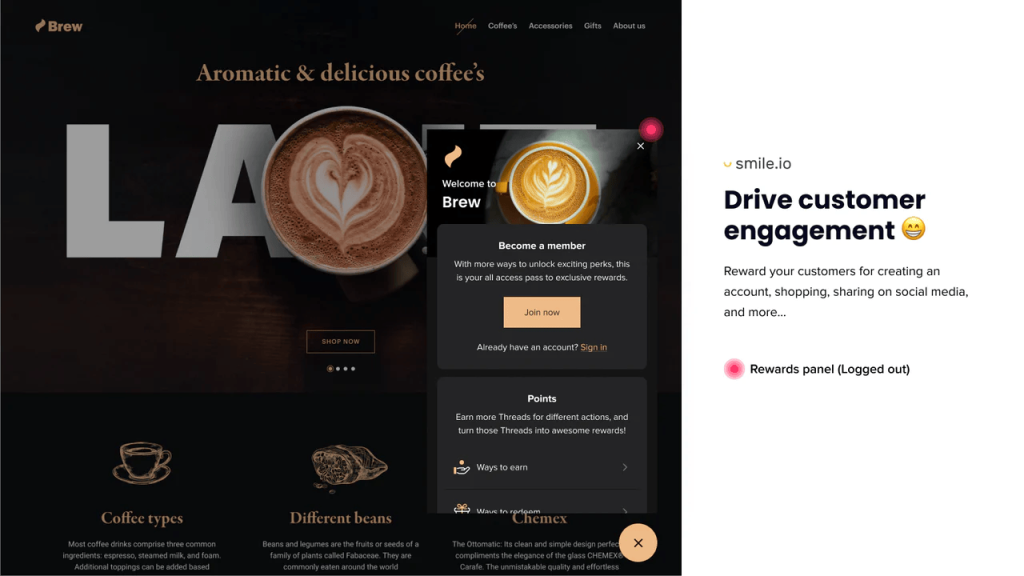
Image source: apps.shopify.com
Smile.io is a versatile customer loyalty platform. It offers a wide range of features, including point-based rewards, referral programs, and VIP tiers.
Unique selling points
- Can integrate seamlessly with eCommerce platforms like Shopify and its alternatives like WooCommerce, and Magento.
- It incorporates gamification elements like progress bars and badges. These make customers’ loyalty experiences more fun.
- It allows you to create customized rewards that align with your brand.
Pricing
- A free plan is available but with limited features
- Paid plans start at $49 per month
Yotpo
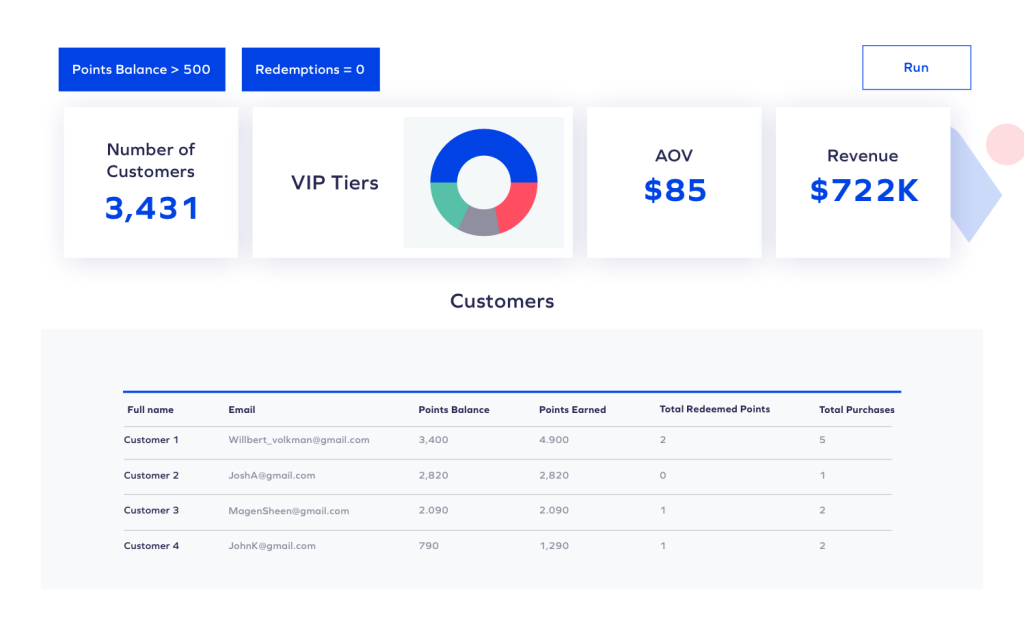
Image source: yotpo.com
Yotpo is a leading customer loyalty platform that drives brand advocacy. It offers a suite of solutions, including loyalty programs, reviews, and referrals.
Unique selling points
- Yotpo’s scalable solutions cater to loyalty marketing programs of businesses of all sizes.
- It integrates loyalty and reward programs into one platform.
- The intuitive design ensures a seamless experience both for businesses and customers.
Pricing
- A free plan is available but with limited features
- Paid plans start at $15 per month
Nurture your customers with a loyalty program
Building customer loyalty is a journey, not a destination.
Stay patient and refine your loyalty program over time based on feedback and data insights. Embrace a culture of continuous improvement by adapting your loyalty initiatives to the evolving customer needs and market dynamics.
Frequently Asked Questions (FAQs)
Loyalty programs drive repeat purchases, increase customer lifetime value, and reduce churn. By encouraging long-term engagement, they help businesses generate more revenue while keeping acquisition costs low.
A loyalty program rewards customers for actions like purchases or referrals, typically at no cost. A membership often involves a fee and offers exclusive benefits, such as premium support or early product access.
Costs vary depending on the tools, rewards, and customization level. Small businesses may spend a few hundred dollars using existing platforms, while large-scale custom programs can run into the thousands.
A strong loyalty program should offer clear rewards, simple rules, multiple earning options like points or tiers, and effective communication. Personalization and ease of use are also key to long-term success.
Success rates depend on the industry and execution. Well-designed programs can significantly increase customer retention and sales, especially when they’re easy to use and deliver real value.
Creating a basic loyalty program can take a few days to a few weeks. More advanced or integrated programs may require several months to plan, set up, and test before launch.
Related articles
16 Key metrics for measuring and improving customer engagement
Customer engagement metrics assess the emotional con...
Master customer conversations: 6 Proven communication techniques
Customer communication does not have to be complicat...
How to use text messaging for your wedding planning business
As a wedding planner, your job is to eliminate the s...
What is the digital customer experience? The ultimate guide
Discover the key strategies to enhance your digital ...
Contact center automation: 10+ Use cases and how to implement it
Find out how to efficiently implement contact center...




